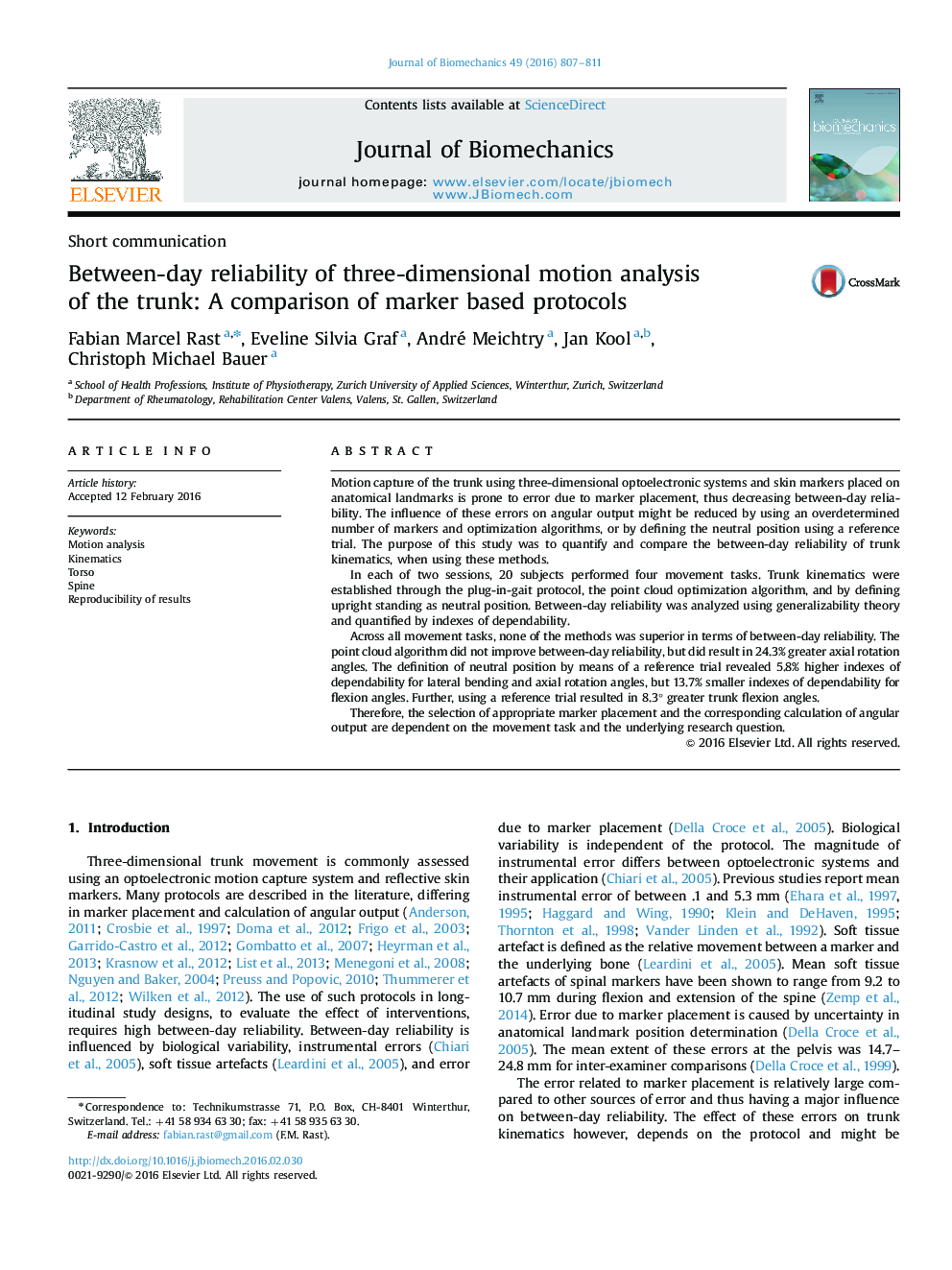| Article ID | Journal | Published Year | Pages | File Type |
|---|---|---|---|---|
| 871908 | Journal of Biomechanics | 2016 | 5 Pages |
Motion capture of the trunk using three-dimensional optoelectronic systems and skin markers placed on anatomical landmarks is prone to error due to marker placement, thus decreasing between-day reliability. The influence of these errors on angular output might be reduced by using an overdetermined number of markers and optimization algorithms, or by defining the neutral position using a reference trial. The purpose of this study was to quantify and compare the between-day reliability of trunk kinematics, when using these methods.In each of two sessions, 20 subjects performed four movement tasks. Trunk kinematics were established through the plug-in-gait protocol, the point cloud optimization algorithm, and by defining upright standing as neutral position. Between-day reliability was analyzed using generalizability theory and quantified by indexes of dependability.Across all movement tasks, none of the methods was superior in terms of between-day reliability. The point cloud algorithm did not improve between-day reliability, but did result in 24.3% greater axial rotation angles. The definition of neutral position by means of a reference trial revealed 5.8% higher indexes of dependability for lateral bending and axial rotation angles, but 13.7% smaller indexes of dependability for flexion angles. Further, using a reference trial resulted in 8.3° greater trunk flexion angles.Therefore, the selection of appropriate marker placement and the corresponding calculation of angular output are dependent on the movement task and the underlying research question.
